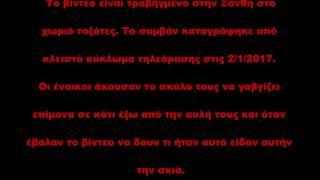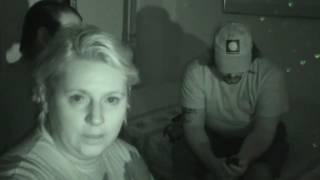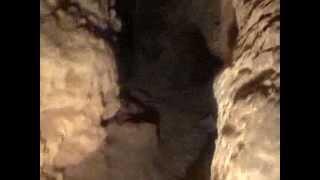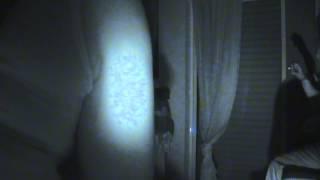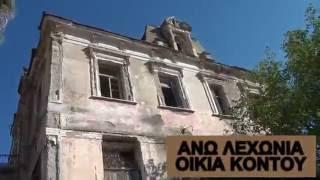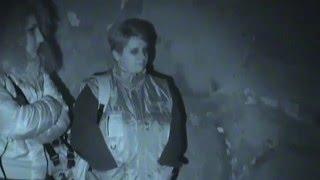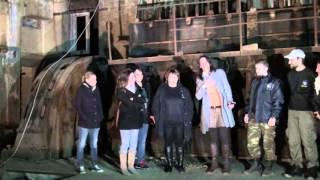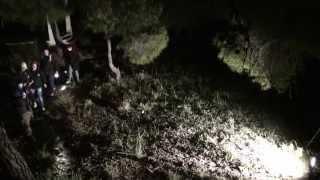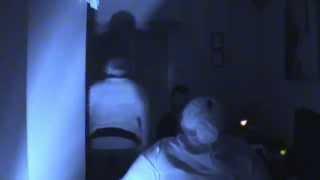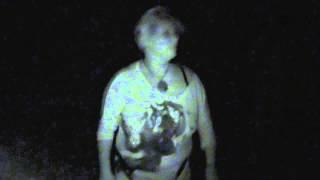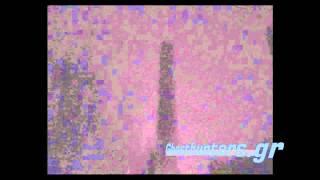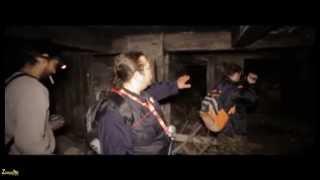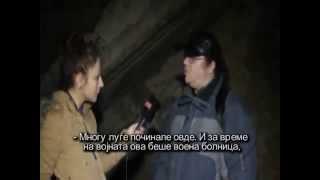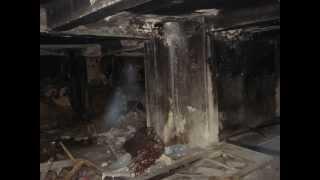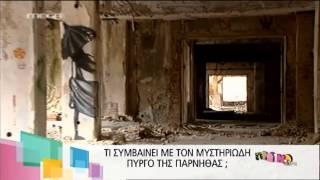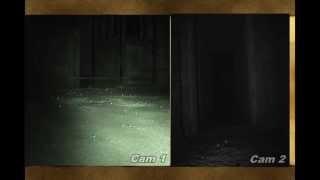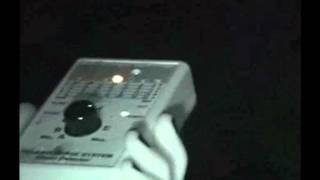Buried deep underground in Essex is a reminder of cold war Britain. Filled with numerous artifacts from the era the bunker is also said to be home to numerous ghosts sighted by previous visitors and paranormal investigators...
The Kelvedon Hatch Secret Nuclear Bunker at Kelvedon Hatch, in the Borough of Brentwood in the English county of Essex, is a large underground bunker maintained during the Cold War as a potential regional government headquarters. Since being decommissioned in 1992, the bunker has been open to the public as a tourist attraction, with a museum focusing on its Cold War history.
The three-level bunker was first built on compulsory-purchased farmland as an air defence station (an 'R4' Sector Operations Control or SOC) as part of the RAF ROTOR air defence project. Upon the demise of the ROTOR SOC the remaining Nuclear Reporting Cell and UKWMO elements were incorporated into a Home Office 'Regional Seat of Government' or RSG.
The bunker was able to hold various numbers (in the hundreds) of military and civilian personnel, the numbers changing over the years as the role of the building changed from SOC to RSG and in its later years; 'Regional Government Headquarters' or RGHQ. In the event of a nuclear strike the RSG / RGHQs etc. would be tasked to organise the survival of the population and continue government operations.
The Kelvedon Hatch bunker was built in 1952–53 as part of ROTOR. ROTOR was a programme to improve and harden Britain's air defence network. It was constructed by Peter Lind & Company of London who still trade today. The bunker was a hardened (three level 'R4') Sector Operations Centre (SOC) for RAF Fighter Command. It was to provide command and control of the London Sector of Fighter Command.
During the 1960s, 1970s, 1980s and early into the 1990s, the UK government (Home Office) maintained the bunker as an emergency regional government defence site. Eventually in the early 1990s when nuclear threat was seen as diminished, the bunker was sold back to the farming family who had owned the land in the 1950s. It is now a Cold War museum and retains many of its original ROTOR and RSG/RGHQ features.
he bunker is built 125 feet (38 m) underground and the entrance is through an ordinary looking bungalow (a standard ROTOR 'Guard House') set amongst trees. The inside of the bungalow leads to a 100-yard-long (91 m) tunnel entering the R4 at its lowest floor (of three). Above are two more floors, the 'hill' which covers it, and a radio mast some distance away.
The bunker was able to accommodate some hundreds of personnel (the numbers changing as function and form varied over the years) and could sustain them for up to three months. The bunker has air conditioning and heating (using the original ROTOR AC-Plant but replacing the original coolant with a more 'modern' type [c.1980s]), its own water supply (mains water and its own deep bore hole) and generators, and was equipped with many types of radio equipment, protected (EMP) telecommunications, teleprinter (MSX) networks and various military systems: MOULD (system to provide communications between Regular Army, TA Battalions and the Army District and Regional Headquarters) and CONRAD (radio government communications systems post nuclear strike) etc.
The Kelvedon Hatch Secret Nuclear Bunker at Kelvedon Hatch, in the Borough of Brentwood in the English county of Essex, is a large underground bunker maintained during the Cold War as a potential regional government headquarters. Since being decommissioned in 1992, the bunker has been open to the public as a tourist attraction, with a museum focusing on its Cold War history.
The three-level bunker was first built on compulsory-purchased farmland as an air defence station (an 'R4' Sector Operations Control or SOC) as part of the RAF ROTOR air defence project. Upon the demise of the ROTOR SOC the remaining Nuclear Reporting Cell and UKWMO elements were incorporated into a Home Office 'Regional Seat of Government' or RSG.
The bunker was able to hold various numbers (in the hundreds) of military and civilian personnel, the numbers changing over the years as the role of the building changed from SOC to RSG and in its later years; 'Regional Government Headquarters' or RGHQ. In the event of a nuclear strike the RSG / RGHQs etc. would be tasked to organise the survival of the population and continue government operations.
The Kelvedon Hatch bunker was built in 1952–53 as part of ROTOR. ROTOR was a programme to improve and harden Britain's air defence network. It was constructed by Peter Lind & Company of London who still trade today. The bunker was a hardened (three level 'R4') Sector Operations Centre (SOC) for RAF Fighter Command. It was to provide command and control of the London Sector of Fighter Command.
During the 1960s, 1970s, 1980s and early into the 1990s, the UK government (Home Office) maintained the bunker as an emergency regional government defence site. Eventually in the early 1990s when nuclear threat was seen as diminished, the bunker was sold back to the farming family who had owned the land in the 1950s. It is now a Cold War museum and retains many of its original ROTOR and RSG/RGHQ features.
he bunker is built 125 feet (38 m) underground and the entrance is through an ordinary looking bungalow (a standard ROTOR 'Guard House') set amongst trees. The inside of the bungalow leads to a 100-yard-long (91 m) tunnel entering the R4 at its lowest floor (of three). Above are two more floors, the 'hill' which covers it, and a radio mast some distance away.
The bunker was able to accommodate some hundreds of personnel (the numbers changing as function and form varied over the years) and could sustain them for up to three months. The bunker has air conditioning and heating (using the original ROTOR AC-Plant but replacing the original coolant with a more 'modern' type [c.1980s]), its own water supply (mains water and its own deep bore hole) and generators, and was equipped with many types of radio equipment, protected (EMP) telecommunications, teleprinter (MSX) networks and various military systems: MOULD (system to provide communications between Regular Army, TA Battalions and the Army District and Regional Headquarters) and CONRAD (radio government communications systems post nuclear strike) etc.
Sign in or sign up to post comments.
Be the first to comment



